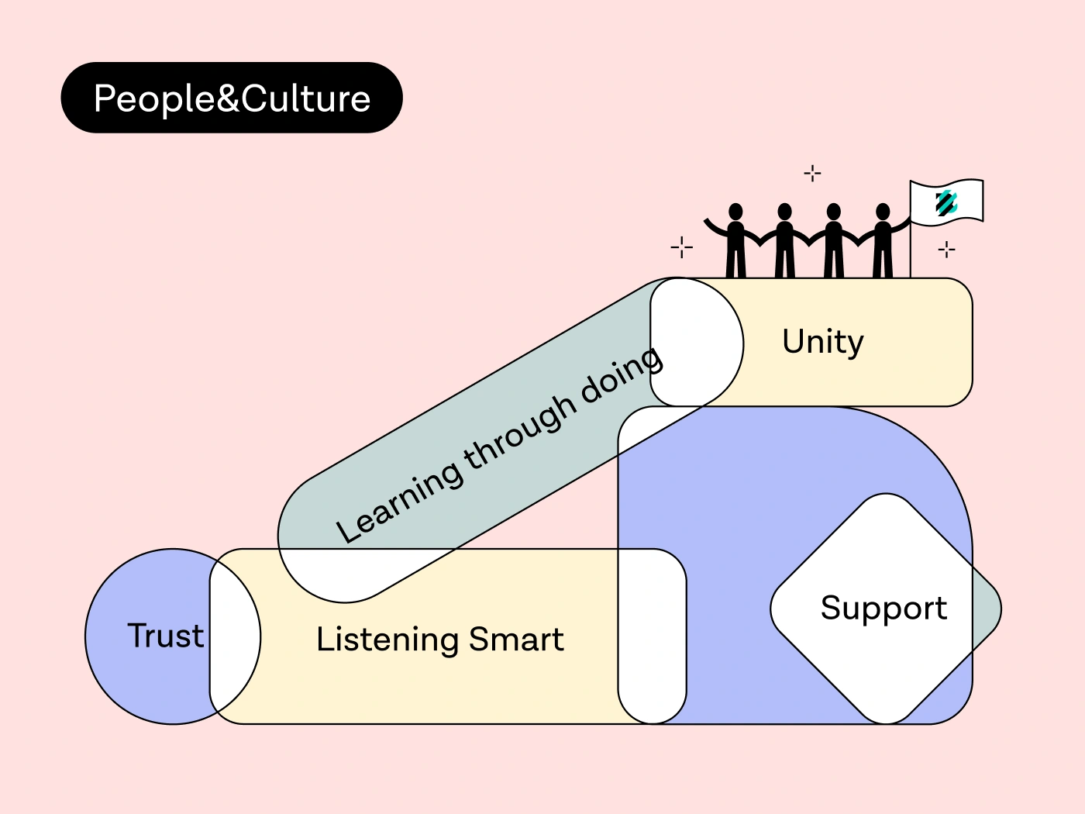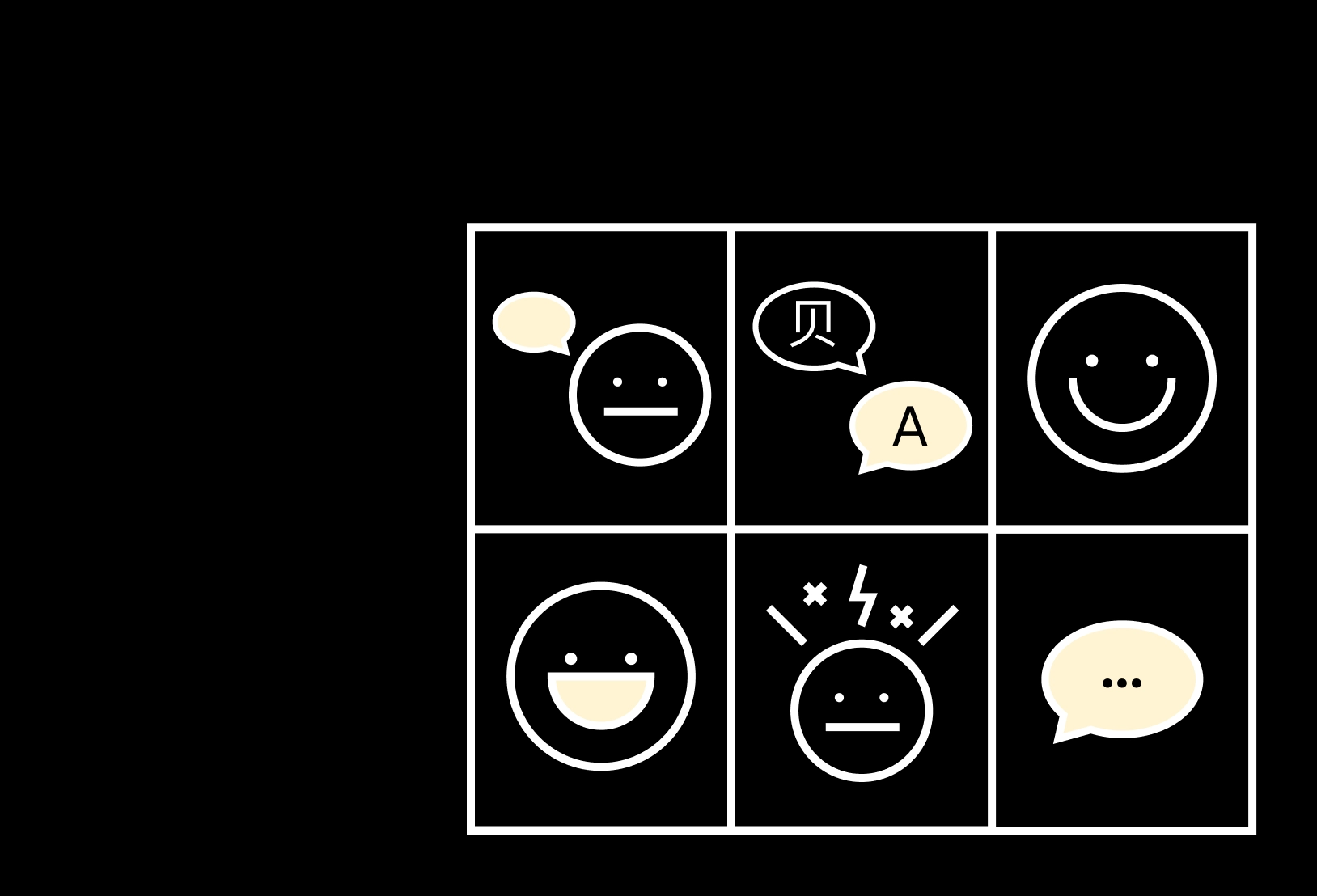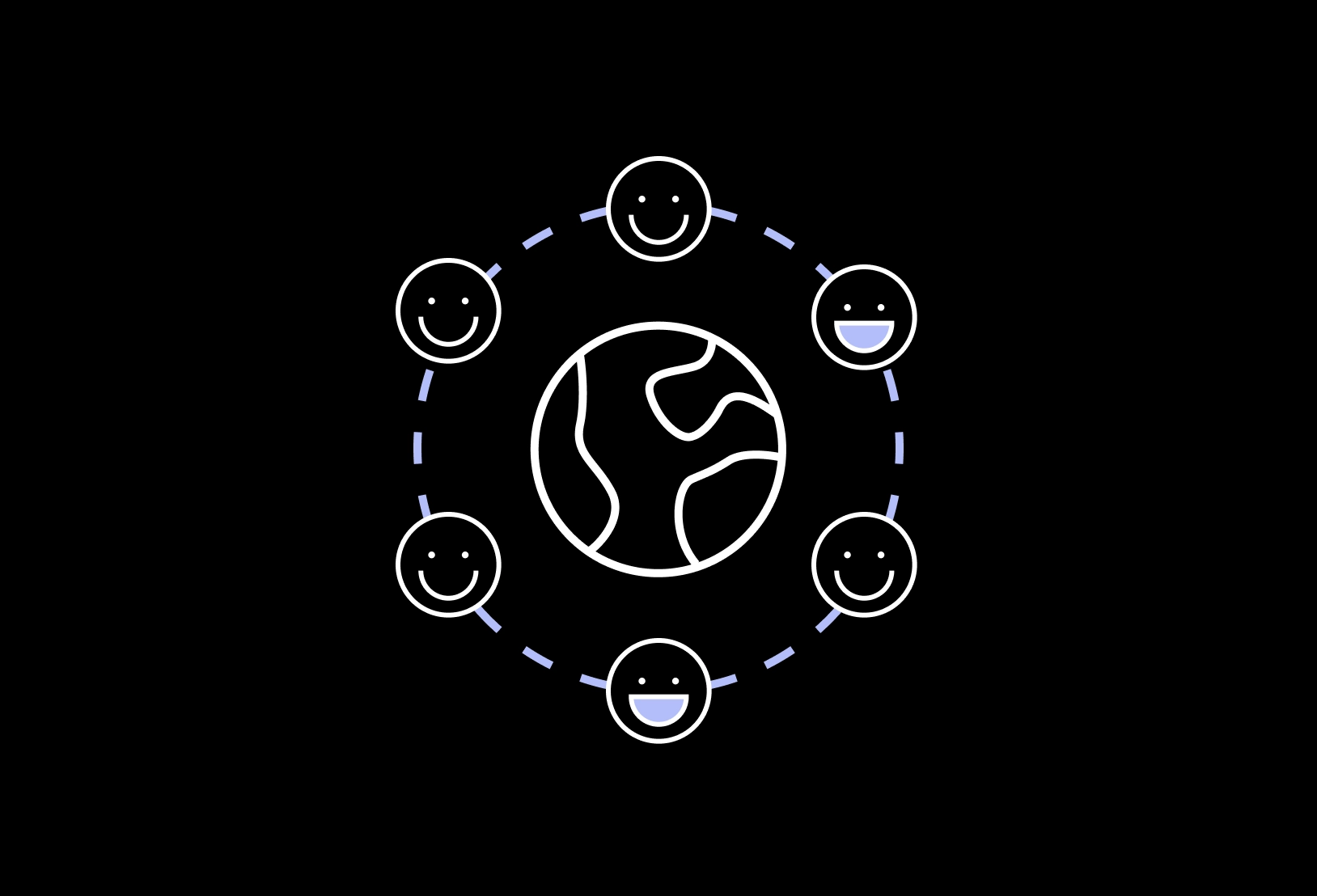
Crushing Misunderstandings: Communication Tips for Remote Employees
While working remotely offers incredible flexibility and opportunities, it’s not without challenges, particularly regarding communication and collaboration. The digital realm often lacks the richness of face-to-face interactions, making it fertile ground for misunderstandings and false assumptions.

The Remote Communication Odyssey
Remote Work: A Comedy/Tragedy of Misunderstandings
Working remotely can sometimes feel like performing on a stage with dim lighting; your expressions go unnoticed. Limited visual cues and physical presence make misinterpreting messages, tone, and intentions easy. This can lead to unnecessary friction and disconnection within your remote team, especially if you are searching for potential issues/misunderstandings from your shoes only.
Language and Cultural Adventures
In the digital design industry, diversity is a strength. But it can also be a source of confusion if language barriers or cultural differences are not addressed. Here, misunderstandings are not limited to non-verbal ones, as verbal communication could trigger issues as well. How so? You toss around jargon, expressions native to your culture, or bad literal translations because of unknown phrases, assuming everyone gets it, while your teammate is left scratching their head. At BB, diversity is celebrated, but it took some adjustments in our communication strategy to ensure a harmonious blend of cultures. It’s about building bridges, not walls.
Lack of Trust: The Cornerstone of Remote Collaboration
Imagine this: you’re in a trust fall exercise, but your teammates are nowhere in sight to catch you. Trust is the glue that holds remote teams together. Lack of transparency and feeling out of the loop can quickly lead to feelings of mistrust, especially in management. Sometimes, due to the lack of feedback or communicating the context of certain decisions, everyone can feel left out or like they are not doing their job properly. Lack of trust creates an environment where people are afraid to speak their minds and openly share their ideas and concerns, shaping the overall culture and affecting not just communication and productivity.
Lack of Patience and Self-awareness
In the digital design industry, ideas thrive when nurtured, not rushed. But, in the race against time, we often jump into the quicksand of wrong assumptions and conclusions. We forget to take the time to evaluate situations holistically.
Have you felt frustrated because your message isn’t getting through, thought like others aren’t listening to you, or that you need to constantly repeat yourself? What if the problem isn’t others? What if the problem is you? If the person you’re communicating with is confused or misinterpreting what you’re saying, before you blame the digital world – consider refining your communication skills!

Start with Yourself…
Start by understanding your strengths and weaknesses as a communicator. It’s a constant quest for self-improvement in the remote realm.
Help, Aiuto, Βοήθεια
We often forget that asking for help doesn’t mean defeat, but the very opposite – that you haven’t surrendered. So seek help – feedback from mentors, managers, or trusted colleagues on how they experience you as a communicator. Sometimes, it’s easier to share your strengths and weaknesses on paper and then ask someone to discuss them with you, confirming or denying your perception of reality. In this process, have patience not just with others but with yourself as well. Listening patiently to the feedback you receive, without premature judgments or misinterpretations, will enhance your active listening skills and help you identify areas for improvement.
Embrace Emotional Intelligence
Building emotional intelligence means developing skills that allow you to manage your emotions and recognize others’ emotions. By doing so, you will improve your self-awareness and be able to recognize and understand your moods, emotions, and drives, as well as their effect on others. You will boost your self-regulation and prevent things from bothering you too much or too long. You will also actively be able to understand how other people feel, treating them according to their emotional needs while reading social cues like facial expressions, values, interests, and concerns.
Find Your Voice
Sometimes, the problem in your communication is that you aren’t communicating enough. Your messages are valuable, so don’t bury them in vague language. Don’t assume others read your thoughts or know how you feel or what you need. Being vague can sometimes convey the message that you don’t care about speaking up. Practice being more assertive and direct. Practice giving your opinion, saying how you feel, disagreeing respectfully, offering your ideas and suggestions without any fears, and even saying no without feeling guilty. In a remote environment, good communicators are more likely to be listened to, understood, and trusted by their peers, bosses, and the people they manage.

…then Continue with Your Team!
Commit to creating a better remote work environment, helping others succeed in finding their voice, and becoming great communicators. It takes a collective effort to construct an inclusive and collaborative environment.
Secure Psychological Safety
Trust is the lifeblood of your remote community. Nourish it by being reliable, transparent, and respectful. Share your challenges and celebrate your successes together. Focus on scaling two-way communication, meaning not only sending out company updates but also actively soliciting an open culture where people feel psychologically safe to speak up. Encourage team members to share their experiences, challenges, and triumphs, to listen and learn from each other, to keep trust alive.
One of the main factors hindering psychological safety is unclear or mismatched expectations. To avoid this, establish expectations through written guidelines on your team’s values, roles, responsibilities, and expectations on performance, such as deadlines, quality standards, evaluation criteria, and conflict resolution. Another great way to achieve alignment on everyone’s expectations is drafting a social contract. Collaboratively create a set of agreements to define and encourage behaviors that ensure team cohesion and protect morale.
Promote Diversity
A diverse team brings a wealth of perspectives, but it also requires an inclusive mindset. Ensure that everyone, regardless of their background or culture, feels valued and heard. Create dedicated time and space to celebrate differences and learn about your team members’ values, beliefs, customs, and etiquette, avoiding imposing your own. Don’t judge something that seems strange or weird to you; instead, keep an open mindset and approach any issue with curiosity. Don’t hesitate to ask for clarification when something is unclear. In a remote setup, context often gets lost in translation. Provide background information and context when sharing ideas or feedback. You can always use emoticons and GIFs for more personal and interactive expression of emotions and reactions if you want to ensure that your message is received as intended.
Work out loud
Kristen Janene-Nelson and Lisette Sutherland describe working out loud as the act of making work observable to others to keep remote team members apprised of each other’s progress. Unlike in a physical office, we can’t see each other getting busy and getting the work done, so it is easy to conclude that no work is getting done. Talking about your work and actively updating team members on your progress increases visibility and trust. The best part of working out loud is that it reduces the need for meetings. Predefine the tools and communication channels through guidelines, so when you collaborate and communicate, it’s easy to see where changes and progress are being made, and what every team member has on their plate. Also, make it a priority to be loud about appreciating your team members regularly, both publicly and privately. You can use various methods, such as sending thank-you notes or giving shout-outs, as long as you do it often.

Conclusion: Take Action for Better Communication
In the realm of remote work, effective communication is not just a nice-to-have; it’s a must-have for success. By recognizing and addressing the pitfalls of remote communication, both individually and as part of a team, you can contribute to a more collaborative, inclusive, and productive remote work environment.
Your Call to Action:
- Self-Reflection: Start by examining your communication style and seeking feedback. Commit to becoming a better communicator by practicing self-awareness, emotional intelligence, and assertiveness.
- Team Collaboration: Encourage open and honest communication within your team. Foster trust by being transparent, reliable, and respectful. Establish clear expectations and norms to avoid misunderstandings.
- Inclusivity: Promote inclusivity within your diverse team. Celebrate differences, learn from one another, and seek to understand your colleagues’ backgrounds and perspectives. Avoid making assumptions and ask for clarification when needed.
- Work Out Loud: Embrace the concept of working out loud to enhance visibility and trust among team members. Update your colleagues on your progress regularly and express appreciation for their contributions.
Remember, improving remote communication is an ongoing process that requires commitment and effort from everyone involved. By taking these actions, you can help create a remote work environment where misunderstandings are minimized, trust is built, and collaboration flourishes. Together, we can crush the misunderstandings that often plague remote work and pave the way for more successful and enjoyable remote collaborations.

